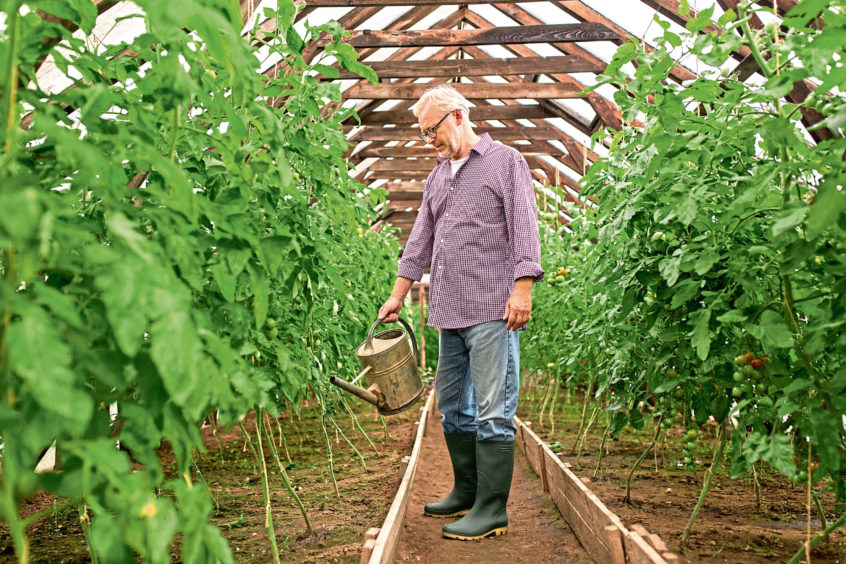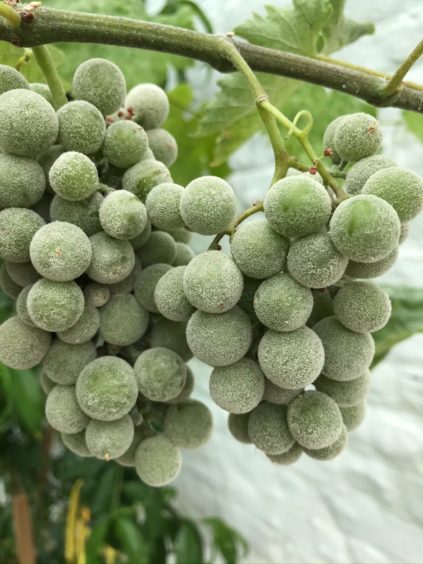There are plenty of good double-acts out there – Ant and Dec, Cagney and Lacey, biscuits and cheese. Not particularly pleasing as those, and partner to some of the plant pests that we talked about last weekend, are diseases.
Where pests are a destructive insect or other animal that will attack our favourite plants and vegetable crops, diseases are conditions either caused by fungi, bacteria, viruses or virus-like organisms that can have an equally negative effect on their health.
Although not welcome on any plant, if not spotted and acted on swiftly, pests and diseases on our vegetables can be extremely demoralising for a gardener.
After weeks of hard work, and just as we are eagerly anticipating the first taste of a freshly dug-up potato or a bite of a juicy tomato, a whole crop can be lost in what feels like the blink of an eye.
For me, blight has to be the number one disease to keep an eye out for, affecting both potatoes and tomatoes – they are in the same plant family, solanaceae. As we generally grow our tomatoes under cover in glasshouses and polytunnels, this will offer them some protection.
Symptoms of blight are brown patches on, and yellowing of, the leaves as they quickly collapse and rot away.
This can spread to the potato tubers growing underground but, if you are vigilant and quick, picking off infected leaves can help slow the spread.
This may lead to having to prematurely chop down all of the foliage but, fingers crossed, after you have left the crop in the ground for a couple of weeks, allowing the skins on your potatoes to harden, you will still have some crop to savour.
Maincrop potatoes are mostly affected but there are blight-resistant varieties out there which are the ones I tend to go for, just to be safe.
Blight disease is caused by a fungus-like organism particularly active during warm and wet weather.
Thankfully where I am it’s felt like a nice and dry summer so far – I hope I haven’t just jinxed it – but to help, I get emails pinged to me from blightwatch.co.uk whenever the “Hutton Criteria” is met.
This is two consecutive days with a minimum temperature of 10C and at least six hours of relative humidity (90%).
All this clever stuff is way above my head, I’m just grateful for the warning.
Next on the diseases list are mildews, of which there are two to look out for.
Downy mildew affects foliage and, again, it is linked with wet conditions.
Last time I had experience of this was when I was using an overhead watering system, installed in a polytunnel in which I had been growing lettuce early in the season.
I had forgotten one of the first things I had been taught as an apprentice – it is the roots in the pot or in the ground that need the water, and soaking the foliage served no beneficial purpose at all, although there are exceptions.
Therefore by soaking the delicate lettuce leaves by water from overhead, I was only encouraging the warm and damp conditions that the downy mildew needed to thrive.
Powdery mildew is the other, and not only affects leaves but is a fungi that can also cause a white, dusty coating on the buds, stems and fruit of a plant, affecting a wide range of them. With this mildew it’s warm and dry conditions the spores of this fungi love.
In my own garden I found the perennial Monarda was being hit by this and as it was growing in a bed that was up against two walls of our house in an L-shaped sun trap, there wasn’t the same, cooler airflow.
So in the spring I transplanted the clump into a more open spot, giving the plant a good mulch of garden compost to 7cm depth to help trap more moisture and thus increasing the length of time the ground will take to dry. So far so good.
In the glasshouse I have recently found this to also be a problem with my grapevine. There are times I can walk in and can feel how dry the air is and how it lacks humidity.
This year I have been focusing on damping down in here – regularly soaking the glasshouse floor which, as it evaporates, puts moisture into the air and helps cool the glasshouse down.
Getting the vents open before it gets too hot and keeping the doors open at both ends helps with air ventilation. Grapes grow so fast and keeping on top of pruning the excess foliage helps keep an open environment in and around the plant.
Leaf spots are another issue I’m often asked about and the other week I answered a question on Beechgrove about leaf spot on Escallonia.
Symptoms appear first as purple-black spots on the leaves, which turn yellow and fall off the plant. First, clean away the affected leaves as quickly as you can as the spores can sit in the soil and splash back on to new foliage during rain. Avoid putting these leaves in the compost for the same reason.
A pre-emptive fungicide spray on healthy foliage could help, but following some of the practices above and regular high potash feeding are the kind of remedies I like to give to a sick plant.
Brian Cunningham is a presenter on BBC’s Beechgrove Garden and head gardener at Scone Palace. Follow him on Twitter, @gingergairdner


